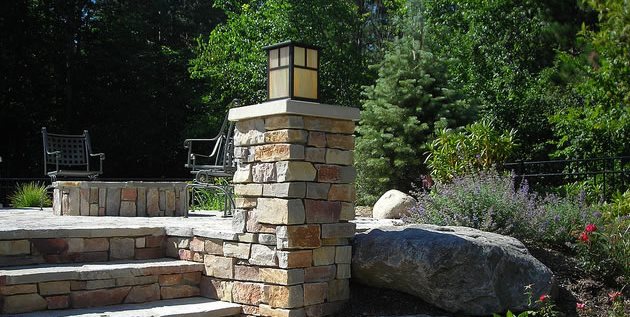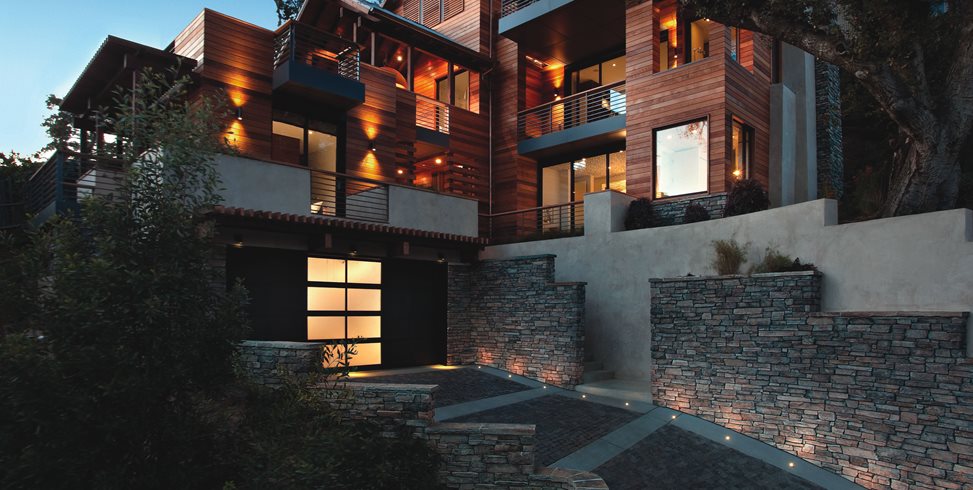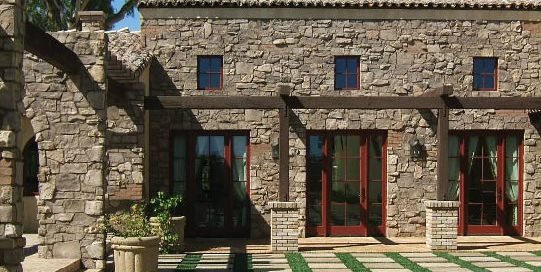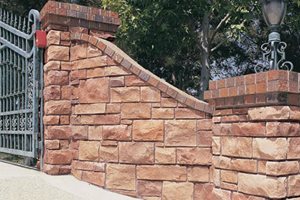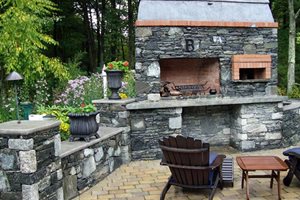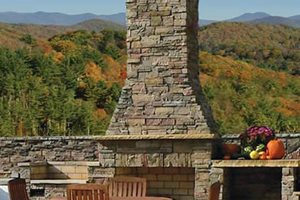Real Stone vs. Manufactured Stone
Compare natural stone with cultured stone veneerThe stone market is heating up now that veneers have become the hot trend in hardscape design. This has driven a growing number of quarries to produce a thinner product for use both indoors and out to give the look of real stone construction for a fraction of the cost.
In the past, before this growth in the market, stone work on a home or landscape utilized mostly whole stone. Construction was a challenge with a material so heavy and costly to transport. This weight demanded much larger footings and thicker walls overall, taking up valuable space in smaller sites.
Cultured stone began in the mid-20th century as a manufactured alternative to heavy natural stone. These composite masonry units were a good deal lighter than real stone eliminating the need and expense of special footings and support. Manufactured in thinner veneer units with a flat back, even more problems were solved. However, in the beginning this product was a poor substitute for real stone veneer due to unrealistic surface texture and color as well as frequent repeats that can be easily seen by anyone looking closely enough.
Over the years manufactured stone has come a long way as companies developed far better methods such as hand coloring each piece and casting their molds from actual stone units. This drove the price up for a better product while the real stone market was increasing the availability of sliced stone veneer from local resources.
Today there is little difference between the two in materials cost, but contractors know when and how each is used to its best advantage for individual projects. A contractor who has done good work with real stone, or similar quality jobs with manufactured stone have their reasons for these materials choices. Their experience with certain materials is key to providing your project with attractive well-built hardscape.
| Issue | Mfg. Stone Veneer | Real Stone Veneer |
|---|---|---|
|
Material cost |
equal |
equal |
|
Installation cost |
low |
moderate |
|
Color options |
high |
moderate |
|
Weight |
low |
moderate/high |
|
Availability |
high |
high |
|
Mason |
no |
yes |
Manufactured Stone
Manufactured stone remains a strong seller due to its problem solving abilities. It is also valuable in regions lacking local sources of quarried stone.
"We manufacture all of our stone. Coronado Stone of Fontana, CA has been refining our product for 50 years and we are innovators. Our business has grown substantially over the last ten years, which demonstrates the consistent demand for manufactured stone veneers. It will grow further because there is nothing else that offers the variety and availability that we can."
Where Not to Use Manufactured Stone
Sarah Angelo cautions, "We do not recommend manufactured stone with water applications such as fountains and pools because chemicals will cause it to deteriorate, as will the constant moisture."
Further north, Eldorado Stone in San Marcos, CA also manufactures stone veneer. Sarah Angelo explains, "Manufactured veneer is about half the cost and a third of the weight of real stone. Our line runs $5 to $7 per square foot for materials. Labor is different and more cost effective due to the light weight of manufactured stone. It won't require footings and ties to support the product. That's where you gain in your budget."
Angelo also details why lighter weight is helpful when the structure is wood frame. "Our product can be installed up to thirty feet tall without additional footing and it solves problems for wood core walls. For a natural stone cladding, they have to put in additional reinforcement to support the weight of the wall, plus the added weight of the stone veneer. There may be additional footings, expansion joints etc, which depends on the local codes."
Natural Stone
The look of stone is age old in some areas such as New England where dry stone walls are a signature of the local architectural style. David Croteau, owner of the Massachusetts company, Stoneyard.com, brings the look of dry stone into the veneer market with innovative products. "My dad and my grandfather were all masons who did dry stone walls, and I put myself through college with dry laying so I know a lot about it."
"The manufacturing process is the reason we are making stone this way today because thirty years ago it was impossible. We've been doing stone veneer due to new blades and saws to cut it thin. We made thin veneer to compete with manufactured because people liked simplicity of natural stone. Ours can be applied to various materials without footings. Masons like the natural veneer better because when you have to trim a man made stone you can see where you trimmed it due to interior differences. For higher grade work with today's technology and local stone sources, the prices are about equal. It's a no-brainer to go natural when it's all similarly priced."
Landscape architect, Matt Schmuke of Apex Landscaping in Grand Rapids, Michigan, sees things from a design point of view. "Sure, there's more variation with cultured stones. If a house already has cultured stone, then we try to match it."
"Our inclination is always choose natural stone because we try to do this with all things in the landscape. When you can use natural materials the project is going to look better and more like how it appears in nature. We set rock into a landscape to make it look like it's always been there. We like it to look as though it was quarried on site. Our Michigan field stone or granite is locally sourced stone that looks more appropriate. But that's limited, so we go further afield in the Midwest that make equally natural alternatives. We want our projects to look local. Plus, the durability of natural stone is always better."

 Backyards
Backyards
 Front Yards
Front Yards
